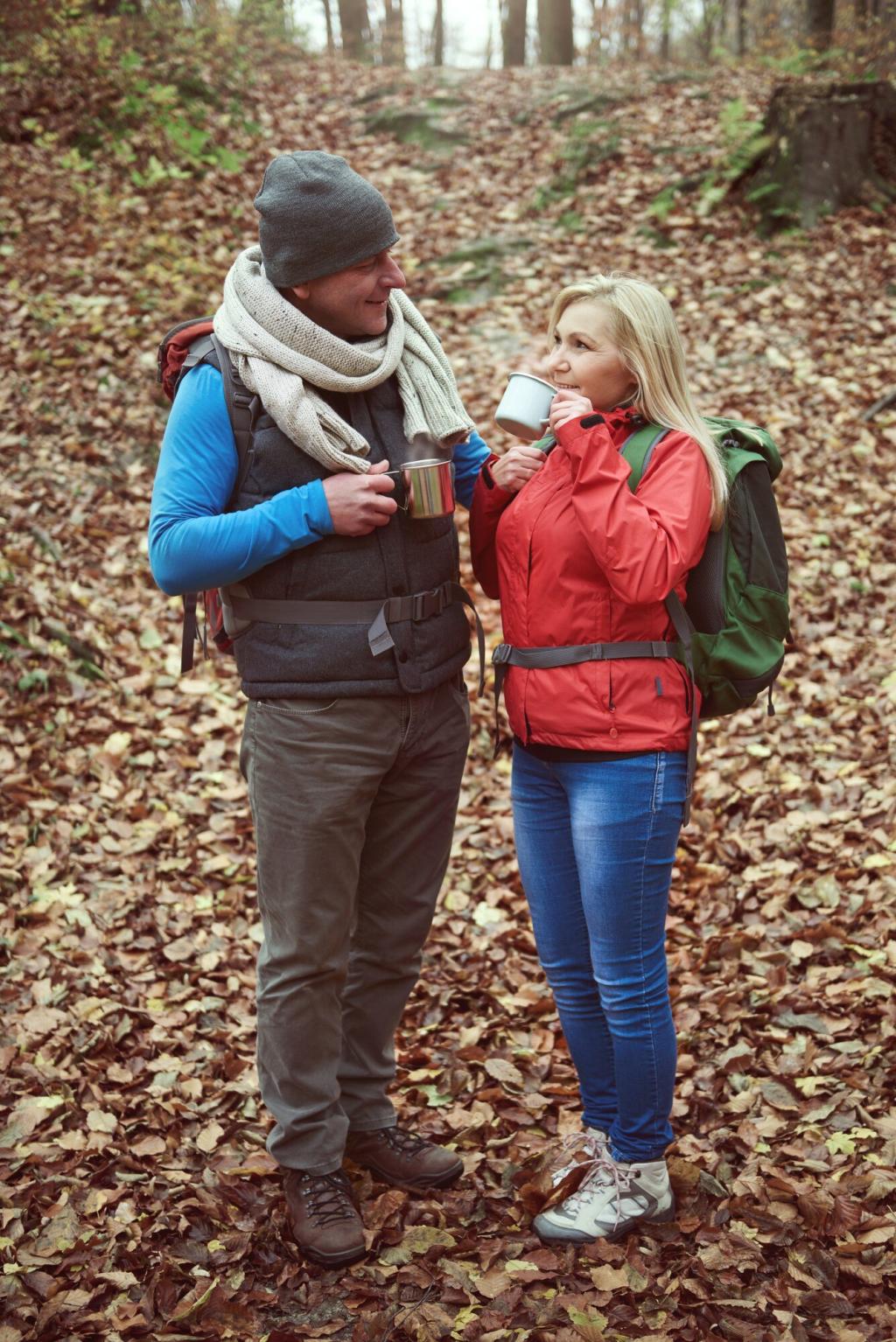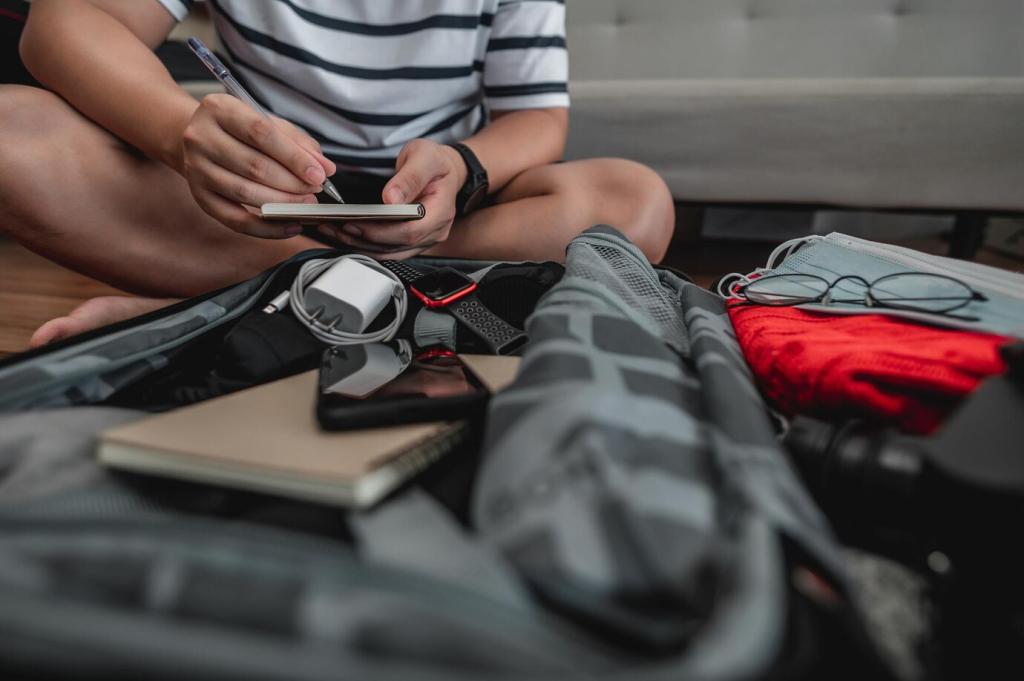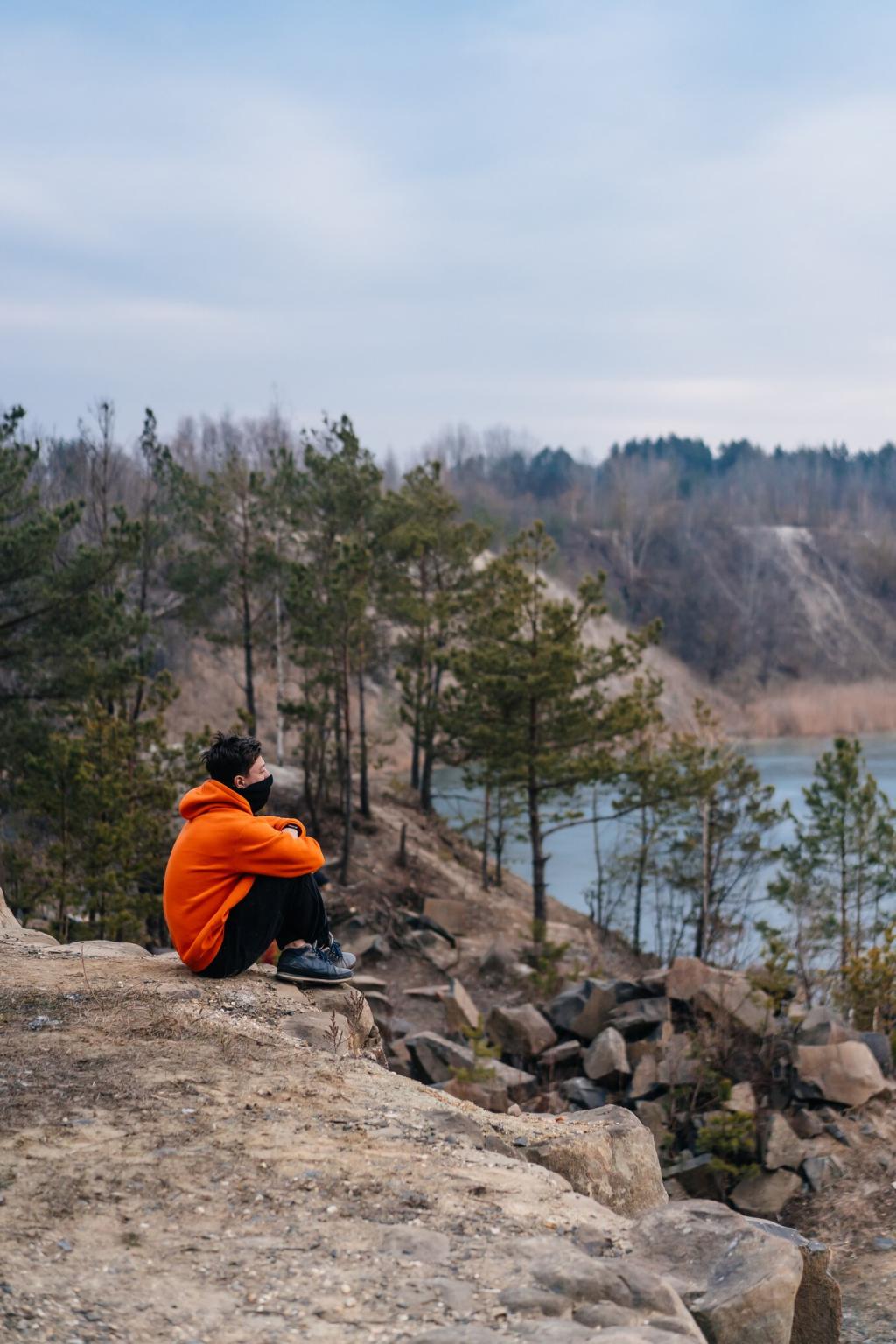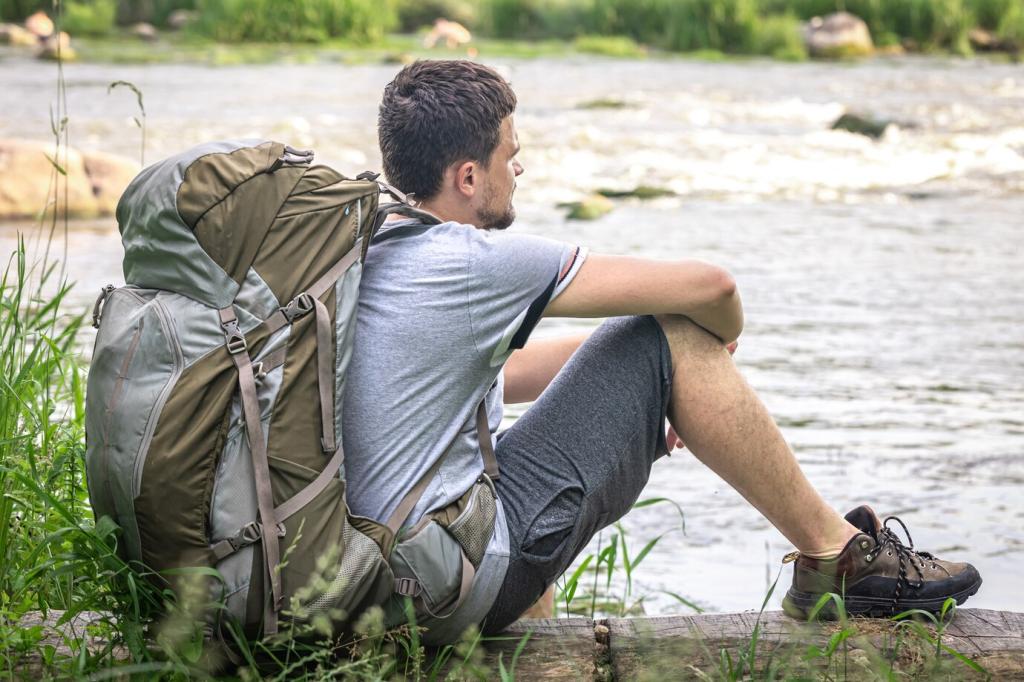Materials That Matter
Merino shines for odor control and comfort across temperatures, while synthetics usually dry faster and cost less. Blends balance performance with longevity. For multi-day trips, many hikers favor merino tops and synthetic bottoms. What combo has kept you comfortable through sweaty ascents and chilly descents?
Materials That Matter
Hydrostatic head numbers and lab breathability matter less than fit and venting in a storm. Durable Water Repellent (DWR) helps water bead, but it wears off—carry a lightweight reproofing plan for long trips. Prioritize seam taping, hood design, and zips you can manage with gloves.





